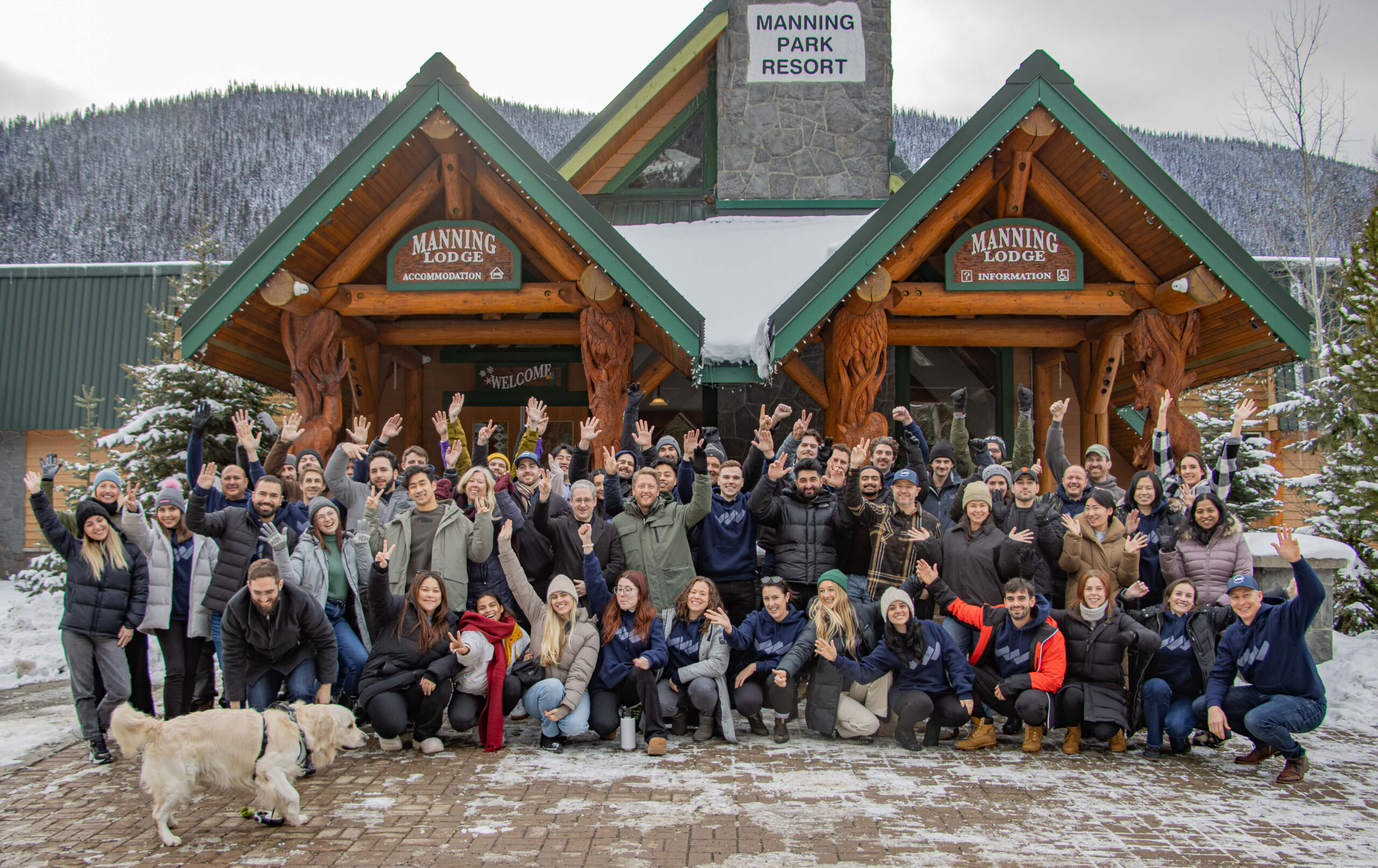Do you know who your biggest whales are?
According to the folks at Gartner, 20% of your existing customers will drive 80% of your organization’s future revenue.
While going after that big whale of a deal might seem like a massive win, we’re here to tell you that nurturing customer relationships from small to big fish is worth the extra line for a long-lasting return.
After all, relationships matter. It’s the introductory deal that gets your foot in the door, builds trust in your offering, and ultimately leads to larger opportunities and lasting customer relationships. But it also plays a hand in influencing a higher win rate by getting in the door with lower barriers to entry.
At the end of the day, Land and Expand is not a new strategy. However, it’s an account-based selling approach with a vast range of tactics living underneath it. So where do you start? And what are you missing that could take your selling to the next level?
If you’re not sure where to start with a land and expand strategy for your top accounts, we’ve outlined five steps for your team to build stronger customer relationships – or rather, two-way partnerships.
1. Be a Buyer Enabler
As soon as you close a new logo, you should be considering how to set yourself up for long-term success. This starts with building a deeper connection with your stakeholders. What are their goals and motivations? Once you understand where they want to go and why, you can collaborate on a plan to get there.
Patrick McNulty, Director, West at Twilio, recommends a flip in the way we think about sales and sellers to help stakeholders succeed:
“I’m no longer a seller. I’m a buyer enabler.”
By taking this approach, you not only help your customer succeed, but make a valuable brand advocate and champion at the same time. Here are some people-first tactics your team can leverage to build long-term relationships:
- Build a mutual success plan (MSP): This roadmap is built in collaboration with your customers and ensures you’re both working towards shared goals across several quarters. This could include a 90-day proof of concept with shared success metrics, followed by an expansion into other teams. Co-ownership is key to a mutual success plan.
- Coach on communicating outcomes: Technical capabilities are important, but your stakeholder also needs to be able to explain the business benefit to the rest of their company—especially at the C-Suite or VP level. Work with them to help explain the outcomes of your product.
“If you can help make your stakeholders successful, then highlight to their business that they’ve made this major contribution, you’re going to have an absolute champion and advocate for life.”
These tactics help you build deeper, long-lasting relationships with your stakeholders — helping you identify and build brand champions for life.
Tip: Looking for your next brand champion? Start by asking yourself, do they want to succeed and drive success for the business? Are they a natural leader? Does their opinion carry weight with leadership?
2. Cross-Sell and Up-sell
Congratulations, you’ve landed your first deal within an exciting new account! And you probably find yourself asking, “what now?” After sharing celebratory high fives with your colleagues, it’s time to build on the foundation you set in step one.
Cross-selling is a sales tactic where you sell related products or services based on your customer’s interest in one of your other products or services. Upselling on the other hand is when your sales team encourages customers to buy a more profitable product than what they originally wanted. If used correctly, both tactics can be a great way of increasing customer loyalty and deepening customer relationships.
“As a salesperson you need to think about how you’re enabling stakeholders to not only articulate the technical solution, but take that above the line and communicate that value up.”
Here’s how you can make the most of cross-selling and upselling opportunities within your sales cycles:
- Execute well and build trust: This means delivering on the promises you outlined in your MSP. If you’re able to help your champion succeed, they’ll be more likely to help set you up for cross-selling in the future.
- Explore multi-threading within the organization: Through your first deal, you’ll be introduced to several decision makers and influencers within the organization. This is the time to start building stronger relationships with them.
- Identify coaches: As you build trust with your stakeholder, ask for introductions to others within the organization. These individuals can help you learn more about the company so your team can build a strategic plan.
- Enable your advocates to pitch ideas on your behalf: Once you’ve converted stakeholders into advocates, provide the resources that enable them to effectively pitch ideas to other departments or co-workers.
“If you’re working on upselling and cross-selling, it’s really just about learning. Learning more about that person, but also the business. What areas of the business make sense to grow into? From there you can work with your champion to get a warm introduction.”
3. Expand Across Departments
If your first deal closed with the marketing team, now’s your chance to work through your expanded network to develop champions in the sales, support, and IT departments. Just as you did in step one, you’re going to want to uncover the goals and motivations driving each stakeholder. Here’s how:
- Partner with your champion to identify key stakeholders: Your champion knows their business best and can help you understand the best people to work with on expanding across departments.
- Identify low effort, high impact enablement opportunities: By executing well on these projects, you gain a quick win to build trust in a new department.
Tip: Leverage a tool like Traction Complete to automatically assign leads to the account owner. This improves continuity and customer experience.
4. Sell Across the Account Hierarchy
Did you know that you can also expand across the account hierarchy? By demonstrating the value and trust you’ve built with one company, you’ll have an easier time selling to related companies.
For example, the Walt Disney Company owns hundreds of independent but related companies. Everything from LucasFilm and ESPN to Disney parks and cruises. If you can build rapport and results with one company, you’ll have a foot in the door with the others.
“Once you’ve built that trust and have that internal return investment proof, it makes it so much easier to go and sell to another.”
Tip: Oftentimes these subsidiaries aren’t obvious, so we recommend using a third-party data provider and visualize account whitespace with an automatic hierarchy builder.
Once you understand the whitespace, it’s time to build a sales strategy:
- Follow the playbook: You’ve learned a lot about how to enable champions across departments and you can use the same strategies as you build across the hierarchy.
- Start with small subsidiaries: Just as you started small with your first deal, you don’t need to go straight to the headquarters as you expand across the hierarchy. You can build your business case and rapport among smaller subsidiaries before approaching the bigger organizations.
5. Measure, Optimize, Repeat
Land and expand is a long-term strategy for success, but it needs to be managed overtime. We recommend measuring and monitoring net revenue retention to glean important insights.
Net revenue retention (NRR) is the percentage of recurring revenue that’s retained from existing customers over time. NRR is a great metric to track within your land and expand strategy as it’s a strong indicator of how well a team can generate additional revenue from its existing customer base.
Here’s why you should consider adopting NRR with your land and expand strategy:
- NRR impacts growth: Increasing retention by just 5% could lead to an increase in profits of 25-90%
- It takes some pressure off new business growth: Did you know that customer retention is faster and on average, costs 7x less than new customer acquisition?
- The effects of high NRR compound over time: NRR has an exponential effect on company growth year-over-year. Even a 20% difference in NRR could mean the long-term difference between staying at the front of the pack or playing catch-up.
Put simply, NRR helps you measure and track the efficacy of your ongoing customer relationships and brand champions. It really is the perfect metric for gauging the overall success of your land and expand strategy.
Ready to land and expand?
A land and expand strategy is all about people. At every step, from starting small and building rapport with one person, to creating brand champions to help with cross-selling/upselling, and finally expanding across departments to the entire account hierarchy — remember this is a people-first challenge. Focus on building better genuine relationships and the rest will fall into place.
With these tactics, you and your team can optimize strategies and identify future opportunities to expand both within existing accounts and beyond.




